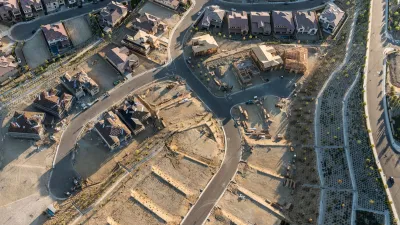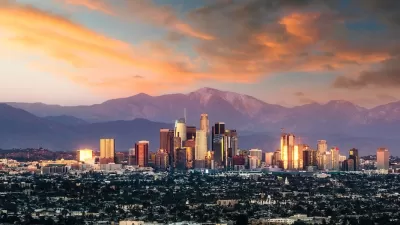The second and third parts in resiliency expert Dave Hampton's 3-part series on what the California fires teach us about preparing for climate change.

In this three part series, resiliency expert Dave Hampton examines the recent California fires for lessons on preparing for the increasing number of disasters anticipated in connection with a warming global climate. In the first part, also summarized in Planetizen, Hampton discussed the difference between "attribution" and "contribution" when discussing the role of climate change in natural disasters.
In the second part, Hampton notes that use of the term "wildfires" is distracting. The "wildland-urban interface" (or WUI) must be the focus of preparation and prevention efforts. WUI “refers to the zone of transition between unoccupied land and human development. Communities that are within 0.5 miles (0.80 km) of the zone may also be included.” (Citing Radeloff et al. (2005))
In the third part, Hampton discusses key concepts from the International Wildland-Urban Interface Code (IWUIC). He then goes on to discuss some recent failures due, in part, to outdated models and maps, and the need to be proactive in developing new fire and flood maps and codes. For more details, read the source article.
FULL STORY: Lessons from the California Fires: Climate Change Impacts and Proactive Planning (part 3)

Florida Considers Legalizing ADUs
Current state law allows — but doesn’t require — cities to permit accessory dwelling units in single-family residential neighborhoods.

Manufactured Crisis: Losing the Nation’s Largest Source of Unsubsidized Affordable Housing
Manufactured housing communities have long been an affordable housing option for millions of people living in the U.S., but that affordability is disappearing rapidly. How did we get here?

Research Shows More Roads = More Driving
A national study shows, once again, that increasing road supply induces additional vehicle travel, particularly over the long run.

EV Chargers Now Outnumber Gas Pumps by Nearly 50% in California
Fast chargers still lag behind amidst rapid growth.

Affordable Housing Renovations Halt Mid-Air Amidst DOGE Clawbacks
HUD may rescind over a billion dollars earmarked for green building upgrades.

Has Anyone at USDOT Read Donald Shoup?
USDOT employees, who are required to go back to the office, will receive free parking at the agency’s D.C. offices — flying in the face of a growing research body that calls for pricing parking at its real value.
Urban Design for Planners 1: Software Tools
This six-course series explores essential urban design concepts using open source software and equips planners with the tools they need to participate fully in the urban design process.
Planning for Universal Design
Learn the tools for implementing Universal Design in planning regulations.
City of Moreno Valley
Institute for Housing and Urban Development Studies (IHS)
City of Grandview
Harvard GSD Executive Education
NYU Wagner Graduate School of Public Service
City of Cambridge, Maryland
Newport County Development Council: Connect Greater Newport





























